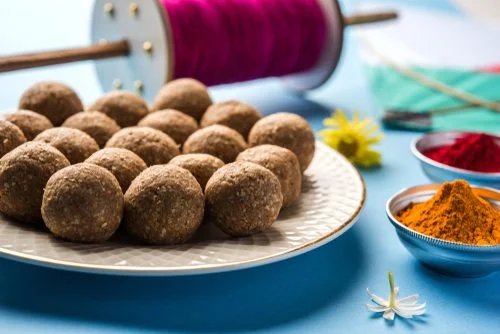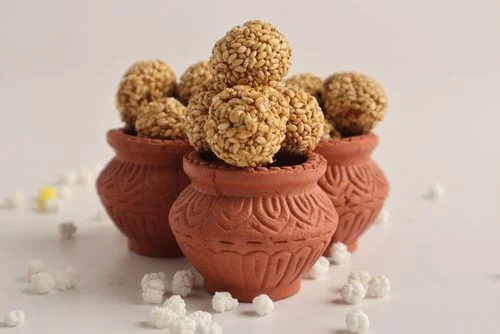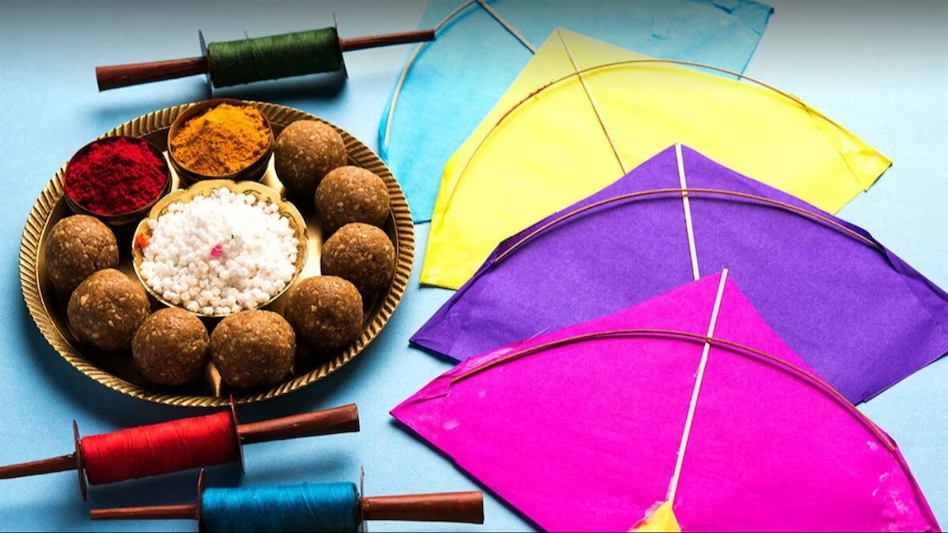Table of Content
Makar Sankranti, an annual festival observed on either January 14 or 15, stands out in the Indian festival calendar due to its unique calculation based on the Gregorian solar calendar. Occurring in the Hindu month of Magh, this astrological event marks the sun's transition into the Capricorn (Makara) constellation, symbolizing the end of winter solstice and the beginning of longer, warmer days. Apart from its celestial significance, Makar Sankranti holds special importance for the agricultural community, signifying the harvest season when winter-sown crops reach maturity. The conjunction of astrological and agricultural milestones makes Makar Sankranti a festive and celebratory time.

When is Makar Sankranti 2024?
The duration of Makar Sankranti celebrations varies among states, with some observing it for a day and others extending festivities over three-four days. Traditionally, the primary Makar Sankranti festival is observed on January 14, except during leap years. As the year 2024, being a leap year, the festival will be celebrated on January 15.
Makar Sankranti: Significance and history
Makar Sankranti carries cultural and historical importance, with its roots embedded in legends. The festival derives its name from a deity who defeated the evil Sankarasur, and the following day is referred to as Kinkrant or Karidin, commemorating the triumph over Kinkarasur by Devi. The Hindu Almanac, known as Panchang, provides insights into Makar Sankranti, offering information on its structure, age, movement, attire, and development.
In the Indian context, the festival symbolizes the sun's northward movement, transitioning from illuminating the Southern Hemisphere. Hindus perceive this period as Uttarayana, symbolizing a time of auspiciousness. In the Mahabharata, Bhishma Pitamah foresaw the sun's shift to Uttarayana as he awaited death.

How is Makar Sankranti celebrated in India?
Makar Sankranti is celebrated with vibrant traditions across India. People adorn new attire and relish homemade delights, often made with jaggery and til. Here’s how it’s celebrated in different parts of the country.
- Tamil Nadu: In Tamil Nadu, Makar Sankranti is celebrated as Pongal, a vibrant festival where locals partake in consuming a special dish made from rice boiled with fresh milk and jaggery.
- Gujarat and Rajasthan: The festival takes on a grand scale in Gujarat and Rajasthan with the celebration of Uttarayana or Makar Sankranti, marked by the popular kite-flying festival known as Patang Utsav.
- Bihar and Jharkhand: In these regions, Makar Sankranti is celebrated with a cultural blend of river plunges and feasting on seasonal delicacies like Chura, offering a celebration of the harvest season.
- Andhra Pradesh and Telangana: The festival spans four days with unique celebrations, including rituals, prayers, donning colourful attire, and offering traditional foods to deities and ancestors.
- Kerala: In Kerala, Makar Sankranti is known as Makaravilakku, a celebration that involves the creation of an artificial light three times on Sabarimala hills, attracting thousands of visitors.
- Assam: Assam’s celebration involves creating bonfires, communal cooking, and specific days dedicated to the worship of cows and honouring friends and family.
- Punjab: In Punjab, Makar Sankranti is marked by fairs, early morning river dips, Gurudwara visits, and the lively performance of Bhangra, the state’s authentic dance form.
- Uttarakhand: A significant attraction in Uttarakhand is the Uttarayani Mela, a fair organised exclusively for Makar Sankranti, drawing large crowds with various cultural festivities.

How to celebrate Makar Sankranti at home?
While the nuances of Makar Sankranti celebrations vary across regions, certain universal elements can be incorporated into your home festivities to invoke the blessings of the Sun god:
- Commence the day by waking up early, ideally before sunrise, and taking a purifying bath to symbolise the renewal of energies.
- Embrace the festive spirit by donning new clothes, setting a positive and celebratory tone for the day.
- Take advantage of the festive occasion to clean and declutter your home. Consider discarding unnecessary items and perhaps giving your home a fresh coat of paint.
- Plan special meals for the day, adding a culinary touch to the celebration. Prepare dishes that resonate with the essence of Makar Sankranti.
- Enhance the spiritual ambiance by decorating the Puja room and illuminating it with traditional diyas.
- If part of your tradition, consider visiting a religious centre, such as a temple, to offer prayers and seek blessings.
- Extend the festive spirit by offering sweets and savouries to neighbours, friends, and family. Optionally, invite them for a shared meal to strengthen community bonds.
- Ensure at least one meal is enjoyed together as a family, fostering unity and harmony.
- Bring joy to your home by purchasing kites and engaging in an evening of kite-flying. This activity is particularly entertaining for children.
- Display compassion by offering fruits, jaggery, or greens to cattle, acknowledging their role in agricultural processes and promoting animal welfare.
Also Read: Griha Pravesh Muhurat : यहाँ जानिए वर्ष 2024 में गृह प्रवेश करने का शुभ मुहूर्त



_1767769068.webp)






Ans 1. Makar Sankranti will be celebrated on January 15, 2024. It is a festival that typically falls on the same date every year, as it follows the solar calendar.
Ans 2. Makar Sankranti marks the transition of the sun into the Capricorn (Makara) constellation. It signifies the end of the Hindu winter solstice and the beginning of longer days, symbolising the auspicious period of Uttarayana. Additionally, it holds agricultural significance as the time for harvesting winter crops.
Ans 3. Celebrations at home involve waking up early, cleaning the house, wearing new clothes, planning special meals, decorating the Puja room, visiting religious centres, sharing sweets with neighbours, enjoying a family meal, flying kites, and caring for cattle by offering them fruits or greens.
Ans 4. Yes, there are regional variations in celebrations. For example, in Gujarat, kite flying (Patang Utsav) is a major attraction, while in south India, the festival is known as Pongal, celebrated with traditional rice dishes.
Ans 5. Traditional foods vary across regions but often include items made of jaggery and sesame seeds. In north India, til ke ladoo and gur (jaggery) are popular, while in south India, Pongal, a dish made of rice and jaggery, is a staple during the festivities.